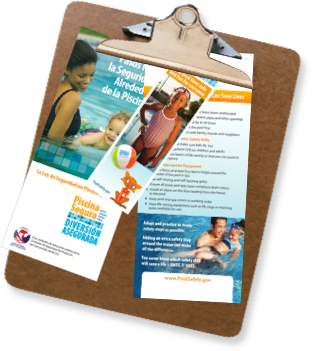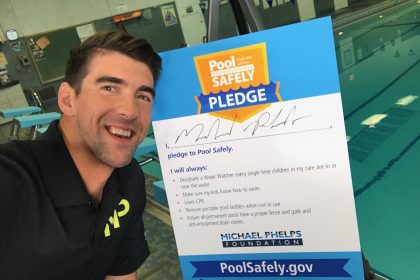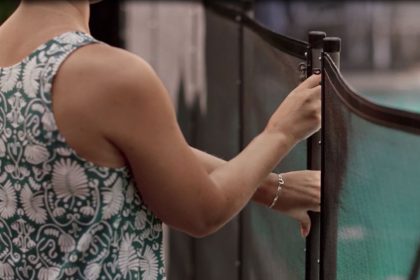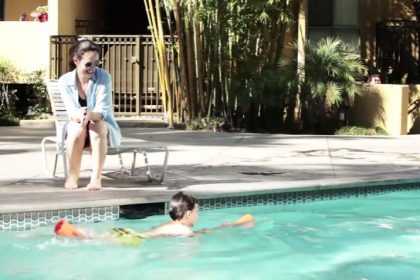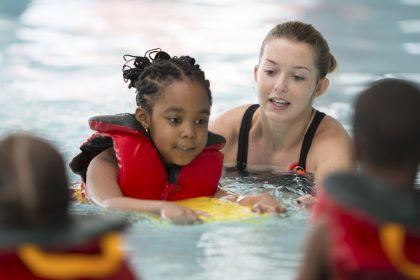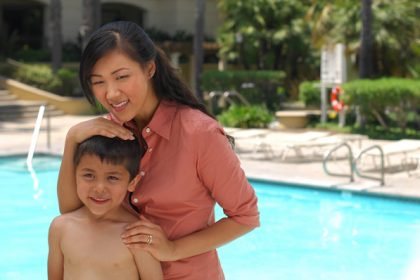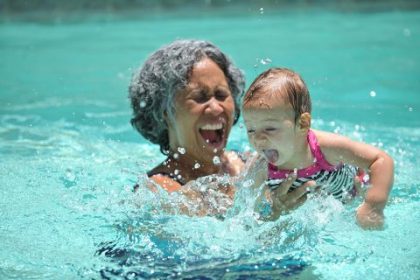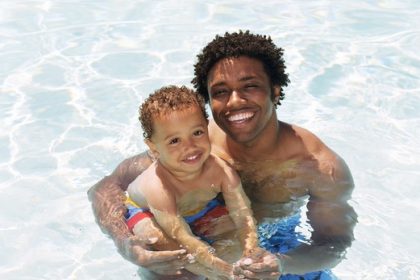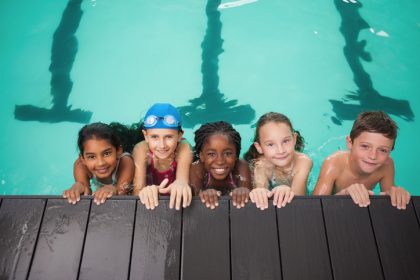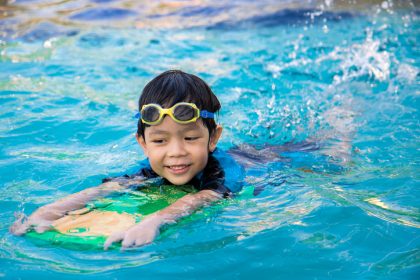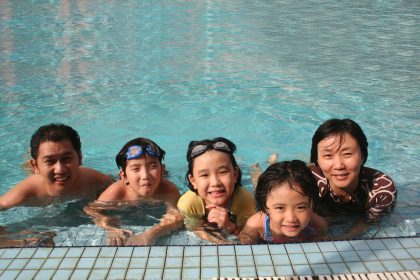The Pool Safely press kit provides information for members of the media to use in reporting on water safety and child drowning.
Media Contact Information
Pool Safely Campaign Leader
Nychelle “Nikki” Fleming
U.S. Consumer Product Safety Commission
NFleming@cpsc.gov
301-504-7908
Vice President and CPSC Pool Safely Account Manager
Jessie Reape
Widmeyer Communications, a Finn Partners company
Jessica.Reape@finnpartners.com
484-888-4063
About Pool Safely
To improve pool and spa safety, the U.S. Consumer Product Safety Commission (CPSC) created Pool Safely: Simple Steps to Save Lives, a national public education campaign aimed at reducing child drownings and non-fatal submersions, as well as entrapments in public swimming pools and spas. Launched in 2010, the campaign fulfills the requirements of Section 1407 of the Virginia Graeme Baker Pool and Spa Safety Act (P&SS Act).
The campaign is a call-to-action for consumers and industry to adopt proven water safety steps and join a national conversation about pool and spa safety by sharing best practices and other life-saving information.
 The Act is named after Virginia Graeme Baker, a 7-year-old girl who passed away after a drain entrapment incident in a hot tub. Graeme was the daughter of James and Nancy Baker, and the granddaughter of former Secretary of State, James Baker III. Following her death in 2002, her family became advocates for stronger water safety measures that would ensure drain entrapment incidents would not happen to other children. It was the advocacy from Graeme’s family, as well as other families who had suffered similar tragedies, and from child safety organizations that led to the creation and passage of the VGB Act in 2007. December 19, 2017 marked the 10 years since the Act was signed into law.
The Act is named after Virginia Graeme Baker, a 7-year-old girl who passed away after a drain entrapment incident in a hot tub. Graeme was the daughter of James and Nancy Baker, and the granddaughter of former Secretary of State, James Baker III. Following her death in 2002, her family became advocates for stronger water safety measures that would ensure drain entrapment incidents would not happen to other children. It was the advocacy from Graeme’s family, as well as other families who had suffered similar tragedies, and from child safety organizations that led to the creation and passage of the VGB Act in 2007. December 19, 2017 marked the 10 years since the Act was signed into law.
For more information about the Pool Safely campaign, please visit the About Us section of the website.
About the U.S. Consumer Product Safety Commission
The U.S. Consumer Product Safety Commission (CPSC), created by Congress as an independent agency, began operation in 1973.
In the Consumer Product Safety Act, Congress directed CPSC to protect the public “against unreasonable risks of injuries associated with consumer products.” In addition to pool and spa safety, the CPSC is committed to protecting consumers and families from products that pose a fire, electrical, chemical, or mechanical hazard.
The CPSC’s work to ensure the safety of consumer products—such as toys, cribs, power tools, cigarette lighters, and household chemicals—contributed significantly to the decline in the rate of deaths and injuries associated with consumer products over the past 30 years.
Campaign Success and Key Statistics
379: CPSC’s 2020 report found that there were, on average, 379 reported fatal child drownings in pools and spas each year
Zero Deaths From Drain Entrapments: Since the Virginia Graeme Baker Pool and Spa Safety Act (P&SS Act) went into effect in Dec. 2008, there have been no drain entrapment-related deaths involving children in public pools and spas.
90,000+: The number of individuals that have shown their commitment to water safety and drowning prevention. A cornerstone of the Pool Safely campaign, the Pledge is a terrific way to reinforce simple safety steps. Among those who have signed the Pledge, they include Olympians, members of Congress, community leaders and advocates, and campaign collaborators.
1,000+: The total number of Pool Safely collaborators to date, these organizations and groups help to raise awareness about water safety in their communities.
Pool Safely Collaborators
Our collaborators are the lifeblood of the Pool Safely campaign and they play a critical role in raising awareness about drowning prevention. They range from water safety organizations to family foundations to pool and spa manufacturers, and more. We are proud to count American Red Cross, Black Swimming Association, Boys and Girls Clubs of America, Color of Autism Foundation, Diversity in Aquatics, Families United to Prevent Drowning, Michael Phelps Foundation, USA Swimming Foundation, Walmart, and many others as collaborators with the campaign. During summer 2020, more than 20 campaign collaborators and water safety advocates contributed to the campaign’s Ask the Experts video series sharing messages for safer summer swimming, including U.S. Olympians Maritza McClendon and Rowdy Gaines.
The Latest Drowning and Entrapment Report
The information below is from CSPC’s yearly report, Pool or Spa Submersion: Estimated Non-Fatal Drowning Injuries and Reported Drownings, 2020 Report.
Key Findings Within CPSC’s Report
379
On average, 379 children younger than 15 years old fatally drown annually.
75%
Of the annual 379 reported fatal child drownings, 75 percent involved children younger than five years old.
76%
Annually, 76 percent of hospital emergency room-treated nonfatal drowning injuries involved children younger than five years old.
2X
Male children younger than 15 had twice as many fatal drownings as female children of the same age.
6,700
An estimated average of 6,700 children younger than 15 years old were reportedly treated in hospital emergency rooms for nonfatal drowning injuries in pools or spas each year.
Residential Locations
Residential locations made up 71 percent of reported fatal drowning incidents and at least 42 percent of reported nonfatal drowning incidents for children younger than 15 years old.
Gap in Supervision
56 percent of fatal drowning incidents involving children younger than 5 years old were attributed to a gap in adult supervision.
Pools
98 percent of hospital emergency room-treated nonfatal drowning injuries and 97 percent of reported fatal drownings were associated with pools (versus spas).
Note: CPSC’s report addresses nonfatal drownings for the period 2017 through 2019 and fatal drownings for the period 2015 through 2017, reflecting a lag in the reporting of fatal drowning statistics.
In 2019, CPSC also released an updated report on suction entrapment incidents in swimming pools, spas and whirlpool bathtubs. Key findings include:
No Reported Fatalities
Since the Virginia Graeme Baker Pool & Spa Safety Act went into effect in December 2008, there have been no reported fatalities involving a child being entrapped on a suction outlet cover in a public pool or spa.
Campaign Video Assets
Below are Pool Safely campaign videos available for download:
Pool Safely PSAs for Download
Below is a link to the website where Pool Safely’s past and current TV PSA campaigns are housed. PSAs are in both English and Spanish and available for download:
Downloadable Pool Safely Logo
The Pool Safely logo is available for download in three different formats:
Branded Campaign Images
The following photos are available for download. Please credit all photos courtesy of the Pool Safely Campaign:
Racial Disparities in Water Safety
Data shows that children in minority communities tend to drown at higher rates and have disproportionately lower swimming ability than white children.
5.5x African American children
ages 5-19 years old drown in swimming pools at rates 5.5 times higher than white children the same age (Source: CDC)
10x more Black children
age 11-12 years old drown in swimming pools than do white children the same age (Source: CDC)
64% of African American children
have no or very low swimming ability, compared to 45% of Hispanic children and 40% of Caucasian children (Source: USA Swimming Foundation)
58% of Black children and 56% of Hispanic children
ages 6-16 years old are at-risk swimmers, compared to 31% of white children the same age (Source: USA Swimming Foundation)
3x African American children and their parents
are 3x more fearful of drowning than Caucasian children and parents. Children who are afraid of drowning are 67% more likely to have low/no swimming ability. (Source: USA Swimming Foundation)
65% of African American children
would like to swim more than they do (Source: USA Swimming Foundation)
Pool Safely Educational Materials
Pool Safely offers many materials which promote water safety.
